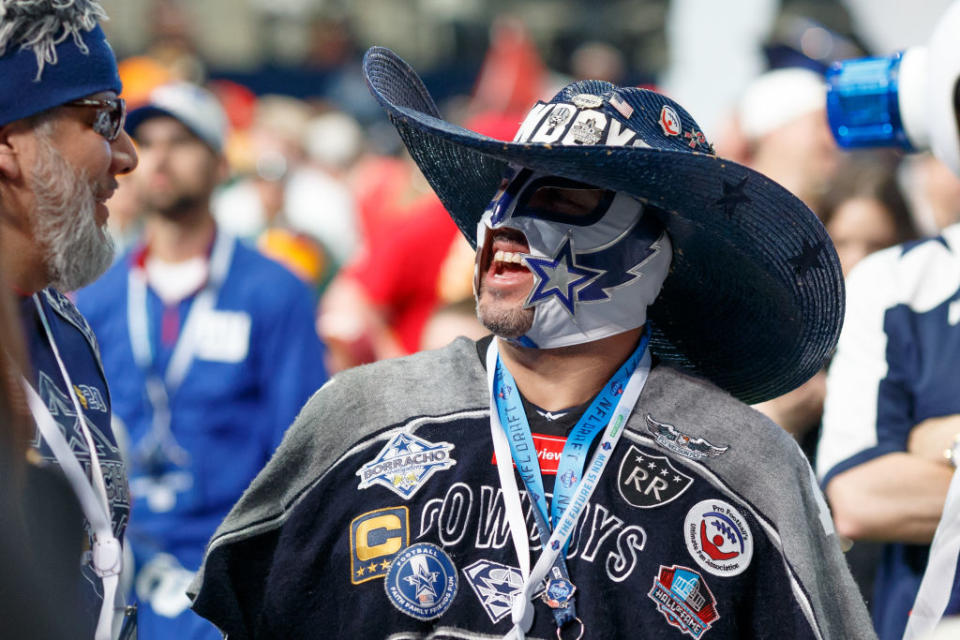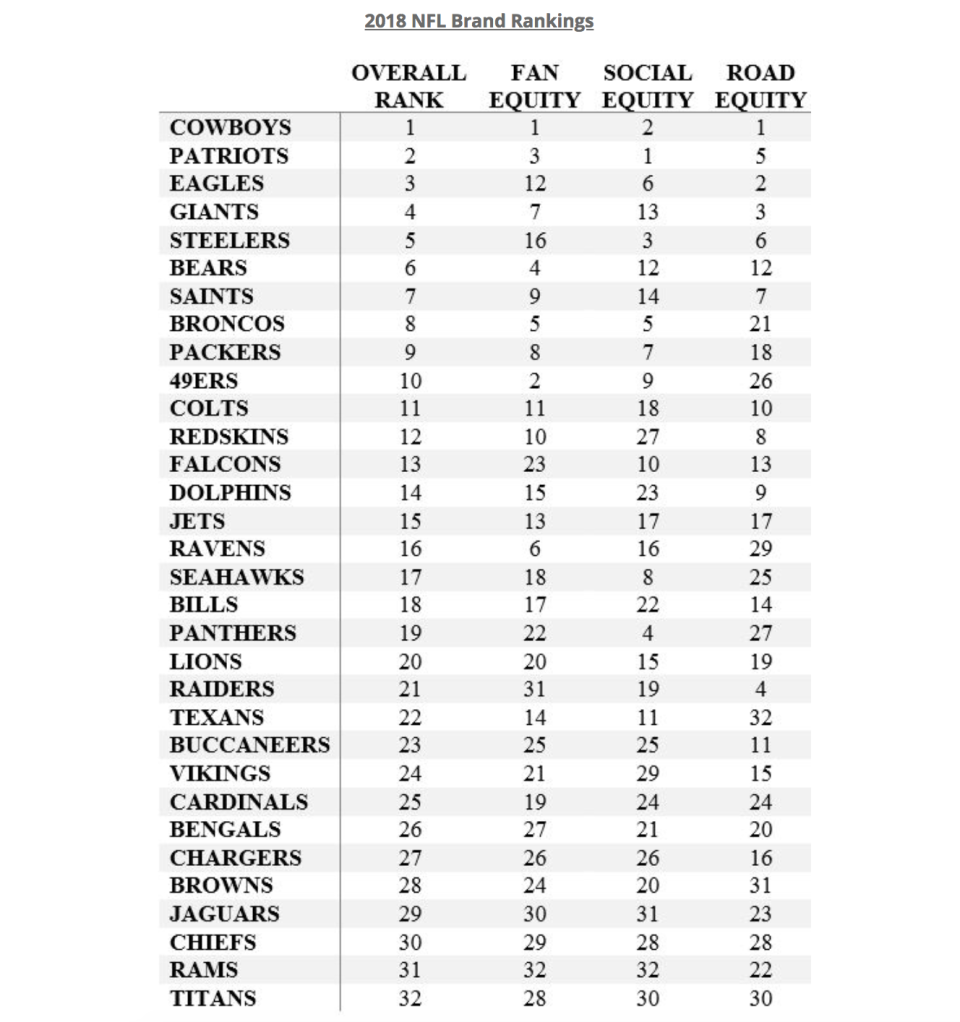Cowboys, Patriots, Eagles have NFL's best fans, study finds

Which team has the best fans in the NFL? Why, yours, of course, because they’ve got you. But if we go on more than gut feelings, there are some statistical and economic models that can tell us exactly which fanbases claim the title of Best in the NFL. Emory University has released its latest ranking of NFL fans, and the results are certain to enrage you … unless you’re a Dallas fan. Let’s dig in.
The best & worst NFL fans
While tracking something as amorphous as “fandom” is, by nature, a tricky and complex exercise, Dr. Michael Lewis of Emory’s Goizueta Business School has developed statistical models to track the depth and breadth of fandom. “The key,” Lewis says, “is that these models are used to determine which city’s fans are more willing to spend or follow their teams after controlling for factors like market size and short-term changes in winning and losing.”
So with that in mind — more details to follow — we’ll cut right to the chase:
Best fanbases, counting down from #1: Dallas Cowboys, New England Patriots, Philadelphia Eagles, New York Giants, Pittsburgh Steelers
Worst fanbases, counting up from #32: Tennessee Titans, Los Angeles Rams, Kansas City Chiefs, Jacksonville Jaguars, Cleveland Browns
The top five are unchanged from last year, and you could have probably guessed them even without fancy statistical models. The bottom five, too, aren’t much of a shock, with the exception of the Chiefs, who apparently have deep but not broad fanbase. (Yes, Chiefs fans, we know that you and everyone you know is a Chiefs fan; you told us this last year when you ranked dead last.)
The complete list is below, but for now, let’s take a moment to see how Emory arrived at these rankings.
How do you measure a fanbase?
Figuring out the “best” fanbases is a dicey endeavor. “First, we have to decide what we mean by ‘best,'” Lewis writes. “What makes for a great fan or brand? Fans that show up even when the team is losing? Fans that are willing to pay the highest prices? Fans that are willing to follow a team on the road or social media? Even after we agree on the question, answering it is also a challenge. How do we adjust for the fact that one team might have gone on a miraculous run that filled the stadium? Or perhaps another team suffered a slew of injuries? How do we compare fan behavior in a market like New York with fans in a place like Green Bay?”
Lewis’s model averages three measurements of fan loyalty: Fan Equity, Social Equity, and Road Equity. If your team isn’t as high as you’d like, chances are it fell short in one of these three areas:
Fan Equity: How much fans spend on their team, at the ticket office and on memorabilia/regalia. (Best: Cowboys, 49ers, Patriots; worst: Rams, Raiders, Jaguars)
Social Equity: How passionate fans are in following their teams on social media across all channels. (Best: Patriots, Cowboys, Steelers; worst: Rams, Jaguars, Titans)
Road Equity: How well teams draw on the road, adjusting for their win-loss record. (Best: the NFC East, Pittsburgh; worst: Texans, Titans, Browns)
How do protests, concussions and other non-gameplay issues affect fanbases?
It’s no secret that the NFL has undergone some tumultuous seasons of late. Between concussions, protests, declining ratings, and the overall politicization of virtually everything in American life, the NFL suddenly isn’t quite the pristine icon it once was. It’s still far and away the dominant American sport, even if, as Lewis notes, the effects of outside forces are becoming more evident.
“There may be ‘signals’ in the data such as changes in TV ratings or higher no-show rates, but it’s tough to tell if these are blips or trends,” Lewis writes. “My conjecture is that the concussion issue and the anthem protests are both very significant problems for teams and the NFL brand. The issues related to concussions may lead to lawsuits and decreased youth participation … [T]he anthem protests have inserted some ugly ‘politics’ into what is fundamentally an entertainment category. If the product becomes less fun, why would you expect fans to enjoy it as much? And while the phrase ‘less fun’ might seem to trivialize the issues, spending on sports entertainment is about as discretionary as it gets.”
The complete list

“The good news for [teams at the low edge of the spectrum] is that on-field success is the best way to create brand equity and fan loyalty,” Lewis writes. “The bad news is that it takes a good amount of success to move the needle long-term.”
For the complete report, tap here, and check out the Fanalytics podcast for more in-depth detail.
____
Jay Busbee is a writer for Yahoo Sports. Contact him at jay.busbee@yahoo.com or find him on Twitter or on Facebook.
More from Yahoo Sports:
• Swedish players defend teammate targetted by racist trolls
• Egypt’s 45-year-old goalie saves penalty, sets World Cup record
• Julian Edelman reportedly planning major defense against suspension
• Rapper T.I. plans to boycott NFL over national anthem rules

